Lunar New Year Symbols & Customs Explained
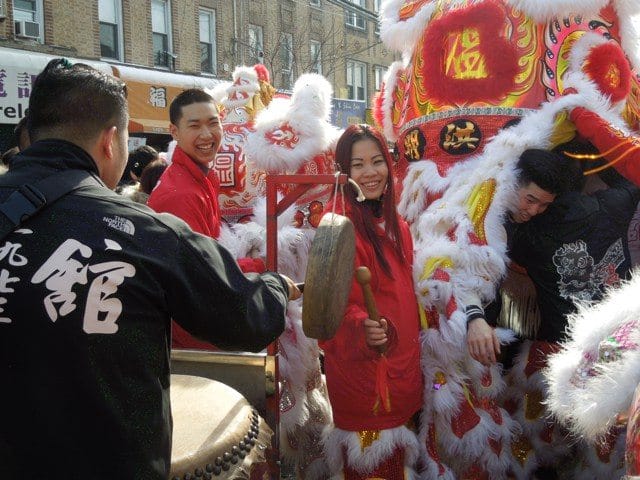
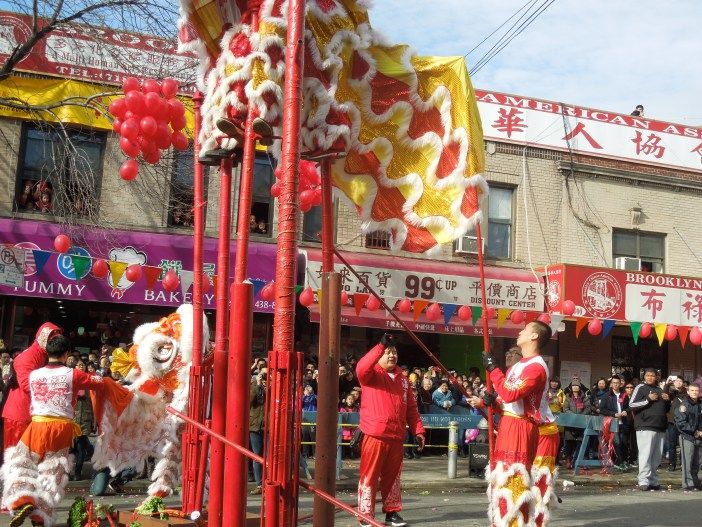
Gung Hay Fat Choy! Tlin Ne Fai Lok!
Lunar New Year celebrations began on Monday, February 8 this year – the Year of the Monkey and the start of the year 4714 according to the lunar calendar.
Here in New York, the signs of celebration include parades and vibrant lion dances, fireworks and poppers, homes and businesses being festooned with red banners and the Chinese characters for prosperity and luck, and lots of red envelopes full of money being handed out to children.
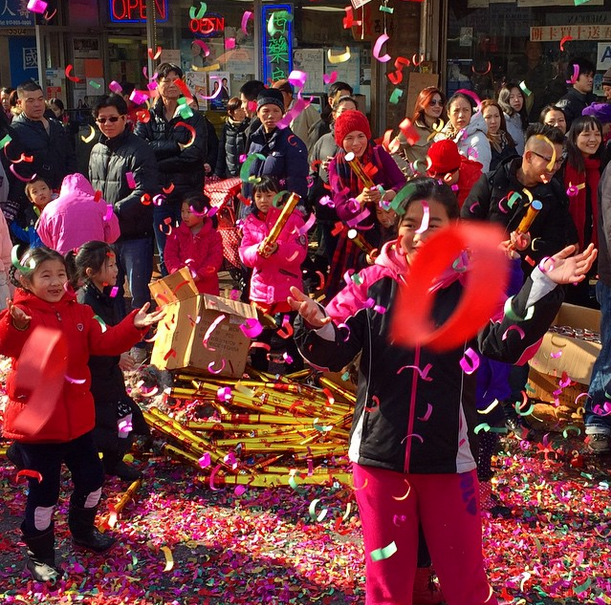
But the holiday is more than just these festive trappings: it is the longest — 15 days — and most important holiday for people of Chinese, Korean, Vietnamese, and other East Asian heritages, wherever they live in the world. It is time for family reunions and paying respect to ancestors, a time to visit and welcome friends, a time to give thanks for the past year, and a time to welcome a new beginning.
In Chinese culture, the 15-day Spring Festival culminates with the Lantern Festival, which helps guide spirits home.
To understand the sights and sounds of Bensonhurst, Sunset Park, and Manhattan’s Chinatown over the next few weeks, we’ve rounded up a few of the most prominent symbols to explain here. Let us know if there are any other things you’re curious about!
1. The Lion Dance is possibly the most visible and entertaining part of Chinese New Year celebrations in America. It is a ritual done not just during new year celebrations but also during the grand openings of new businesses and community centers in order to ward off evil spirits and bring prosperity to the new endeavor.
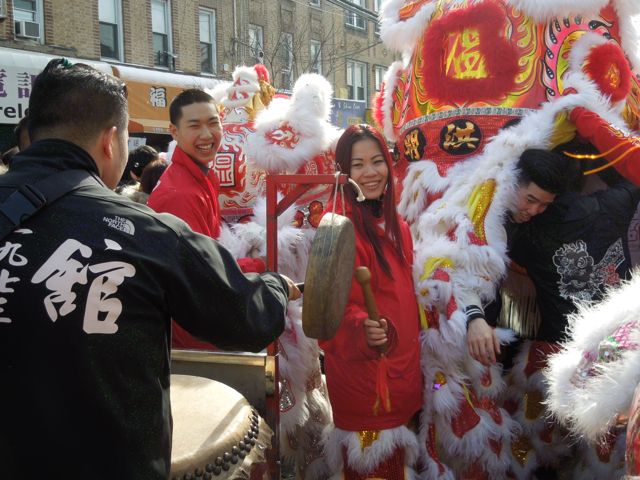
Each lion’s dance is performed by two dancers and two lions are always present, usually dancing around or in concert with one another, acting out the playfulness and aggression of the legendary lions who are said to have protected villagers from a monster. Lions are revered and symbolized by five colors: yellow, black, green, red, and white – representing the five directions of the Chinese compass and the five elements of life. The lion’s forehead also has a small “magical” mirror to scare away evil spirits.
2. Red is the predominant color in Chinese New Year celebrations, with it being used in lanterns, clothing, money envelopes, and decorations. It brings good luck, prosperity, good fortune and happiness to those within the home. The color red also symbolizes joy, virtue, truth and sincerity.
Bright colors such as gold, orange and purple are also worn to scare away evil spirits and bad fortune for the coming new year. Gold represents wealth and good fortune. As Lunar New Year is a springtime holiday, the bright colors and new clothing also represent rebirth – new beginnings.
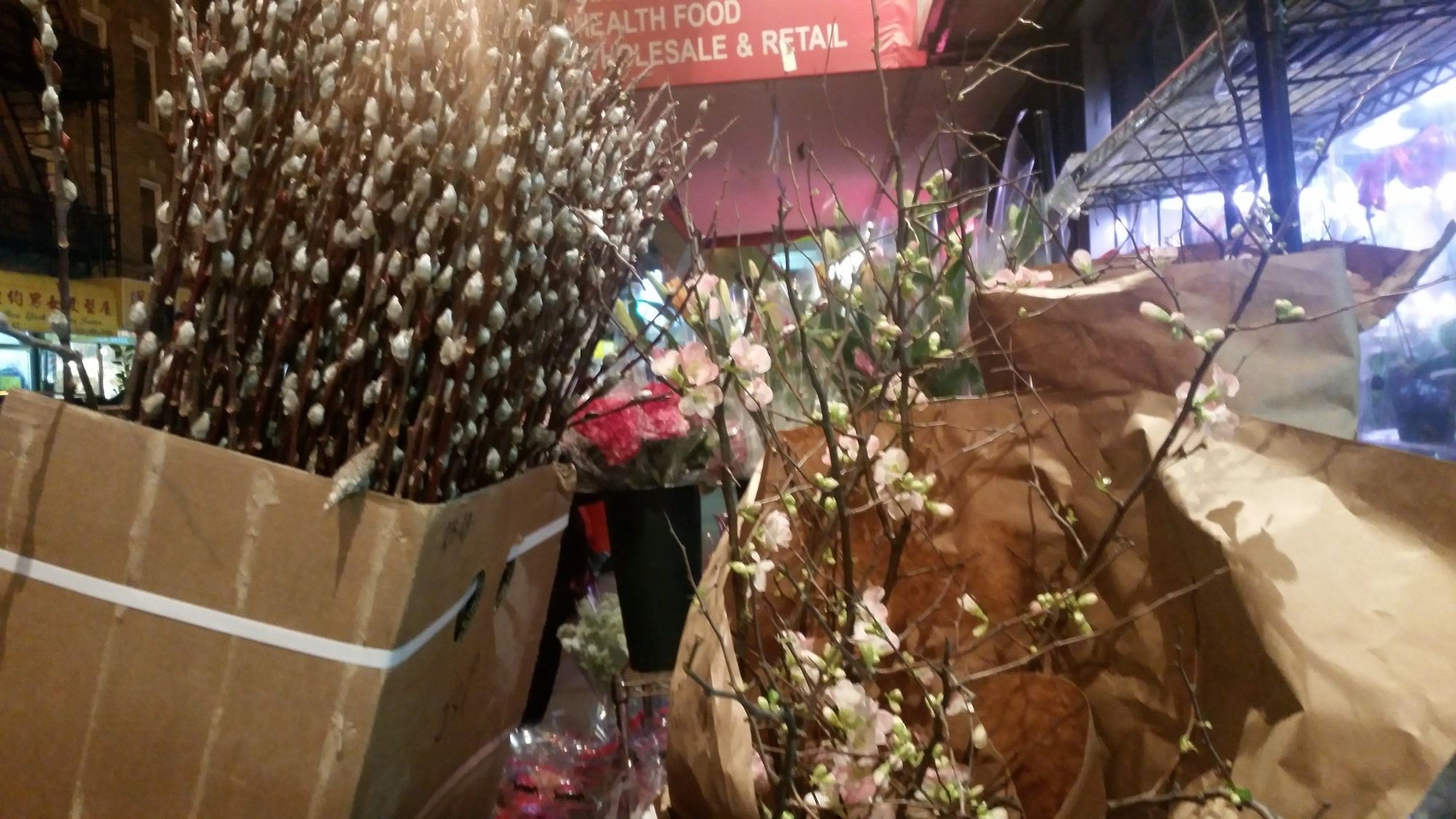
3. Flower sales do brisk business in the days leading up to and into the start of the new year. Homes and stores are decorated with sprigs of plum blossom, narcissus and sunflowers, as well as sticks of bamboo and leafy bunches of kumquats and oranges. These blooms and fruit symbolize good fortune and life.
4. Red envelopes are stuffed with money — in an even dollar amount, usually including the numbers six or eight — and given to children and unmarried individuals towards a new year of new fortune. Their name, “hong bao,” literally means “red packages.” The word “hong” also sounds like the word for “prosperous.”
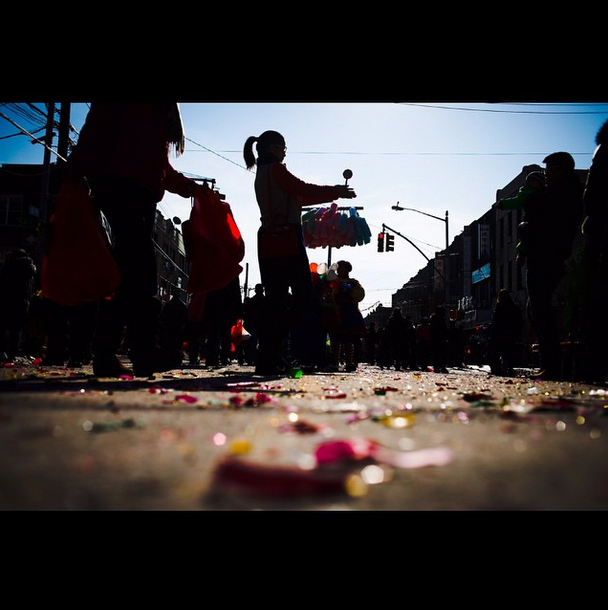
5. Traditional new year dishes include oranges, chicken, a whole fish, dumplings, long noodles, and Buddha’s delight. Why? Oranges represent good fortune, dumplings symbolize ingots of gold, the whole fish remains intact from head to tail in order to bring a good year from start to finish, long noodles are for long life (eat them like spaghetti; you don’t want them to break mid-bite!), and Buddha’s Delight’s eight or more vegetarian ingredients harken to more prosperity since the number ‘eight’ sounds like the word for ‘hundred.’
6. Pictures of monkeys abound this year because it is the year of the monkey, according to the Chinese zodiac, which follows a 12-year cycle. Each year is associated with a different animal: the rat, ox, tiger, rabbit, dragon, snake, horse, ram, monkey, rooster, dog, and pig. People who are born in a monkey year are associated with cleverness, quick wit, enthusiasm, gentleness, honesty, and a bit of a quick temper. The Years of the Monkey include 1920, 1932, 1944, 1956, 1968, 1980, 1992, 2004, and 2016.




